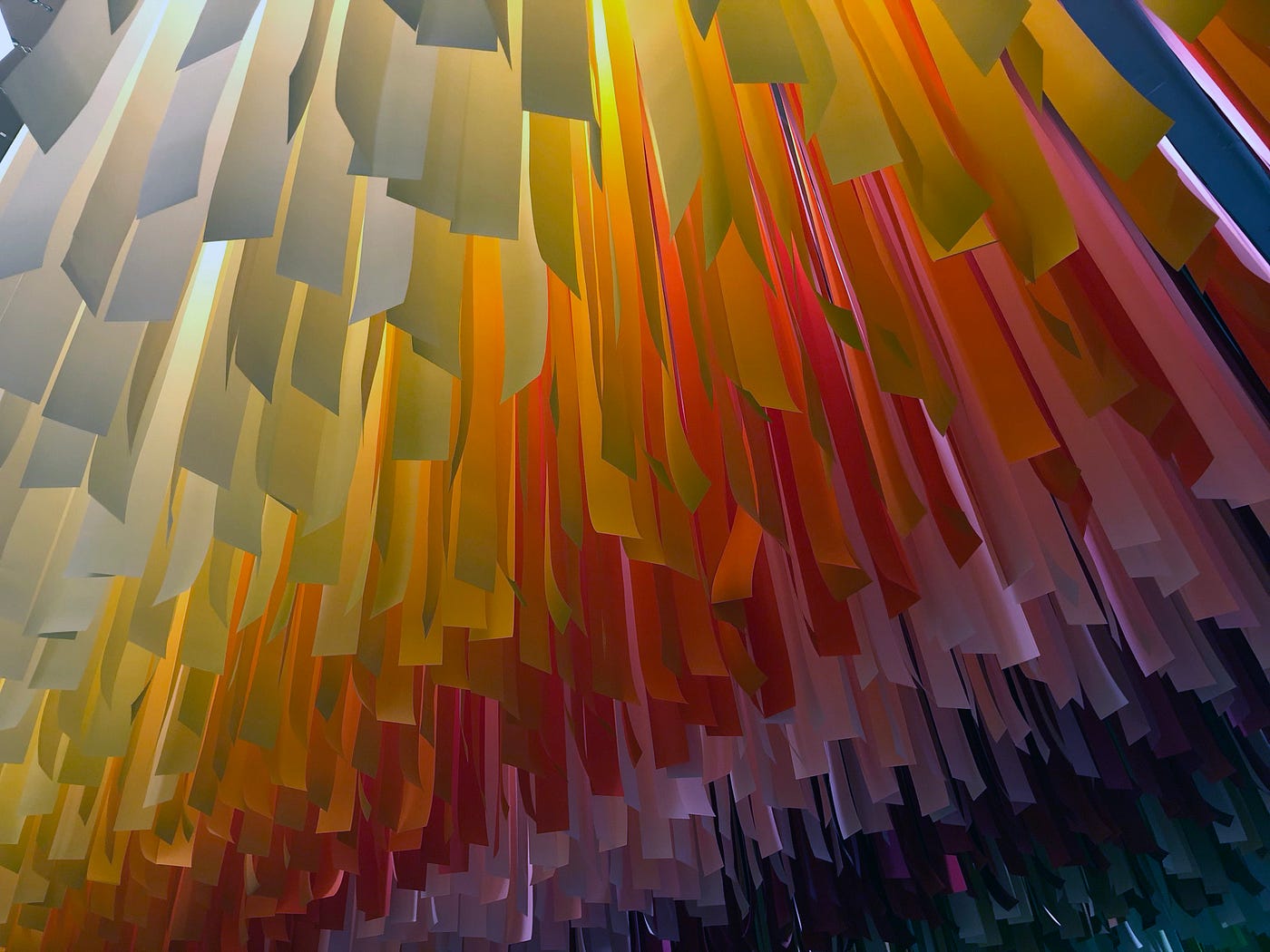
The San Francisco-born selfie museum lands in Soho
It’s June 2012. I’m standing in what looks like a field of stars. Infinite pinpricks of light, as far as the eye can see, blocked only where the particles cannot pass through my head and torso.
This is Yasoi Kusama’s Fireflies on the Water.
I’m completely alone. It’s breathtaking.
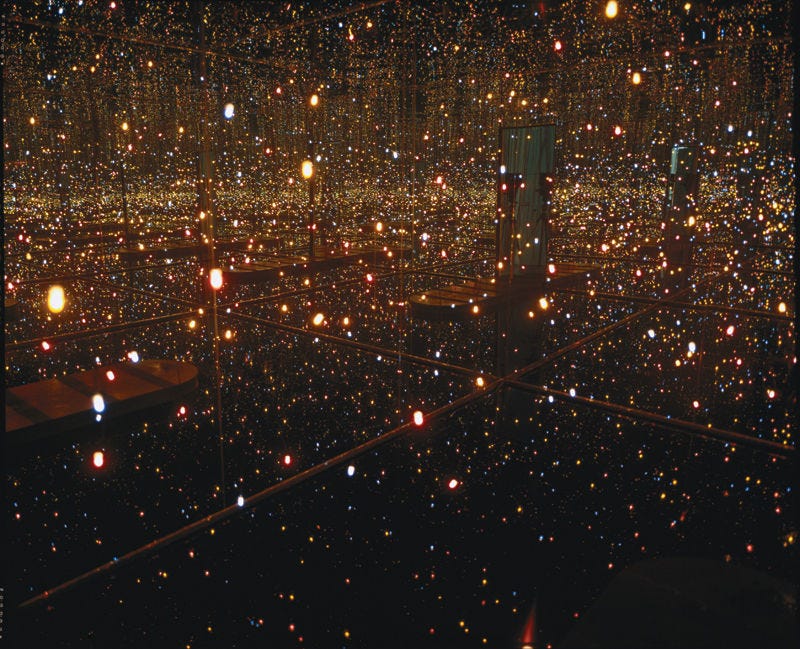
I’ve ducked out of work early to go up to the Upper East Side to the Whitney Museum of American Art, back in the days when the museum could be found on 5th Avenue. The exhibit has only been open a few days but I purchased my ticket weeks ago, afraid it would sell out. But when I arrive, there’s barely anybody else there.
The guard lets me in to the tiny room, tells me I have exactly 60 seconds to absorb the art, and that photography is strictly prohibited—ugh. My index finger twitches as I look around and try, desperately, to comply with the rules even though I’ve seen a few friends on Facebook change their profile photos to a star-filled mirror selfie. And who am I to deny that instinct to trap what cannot be captured? Even though no matter how high the resolution of one’s camera, it feels like a moment which cannot be contained.
Several years later, anything Kusama yields hours long lines the second you whisper “infinity room” and photos are most definitely allowed. Selfie museums have taken over Instagram—every photo on social media looks like a glossy ad campaign with a curated color palette of dusty desert pastels or flashy neon brights, marred only by the occasional prescence of an outstretched arm or Photoshop blooper. But it all seems rather empty at the end of the day. Devoid of substance.
But are these Instagram palaces merely cash grabs taking advantage of our performative instincts? What’s the difference between one of these and the Rain Room, which traveled to sold out crowds at the Barbican Center, MoMA, and LACMA? Is there truly a “right” way to experience art, when speaking of large scale artworks which consume the body and senses? After all, these sorts of immersive art experiences can surely function as an entryway drug to deeper immersive experiences: ones with the bigger themes and narratives baked in for those who want to find them.
Plus, there’s also an inherent value in unfettered play and open exploration as an adult. It’s a kind of play which isn’t framed by levels or points or a win-state—just joy. And in these selfie museums, we often find the experience encouraging the rare state of social group play, outside a game or team sport.
I am hopeful but skeptical about these art pop-ups which appear for a few weeks at a time and then disappear into the ether. So imagine my surprise when I realize, an hour into Color Factory in Soho, that my face hurts from smiling so damn much.
“I didn’t think I’d have so much fun,” confesses a friend.
“Me neither,” I say, as I fall backwards into the ballpit, iPhone in hand.
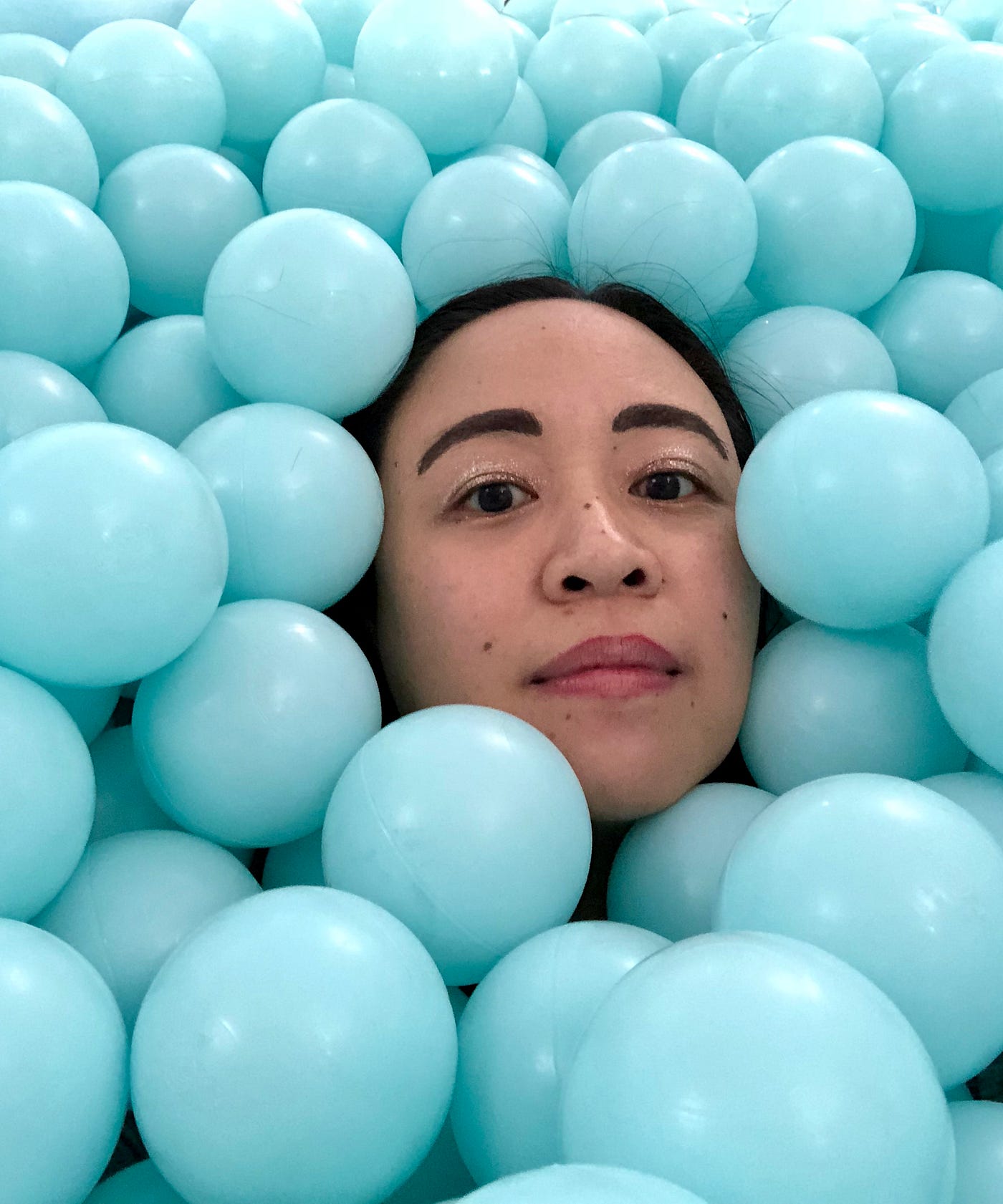
The Color Factory, newly arrived to NYC after eight sold-out months in San Francisco, was created by event planner Jordan Ferney of the blog Oh Happy Day. The project ties together 16 disparate meditations on color by artists such as Tamara Shopsin and Jason Polan under one theme: the way New Yorkers experience color in their everyday lives.
Get Kathryn Yu’s stories in your inbox
Join Medium for free to get updates from this writer.
SubscribeSubscribe
But this is a completely different installation from the San Francisco one and tailored to the local audience. The tone is set immediately by the building’s exterior murals and a waiting room installation by Queens writer Won McIntosh, who expounds on the tones of the city: everything from dull gray of dingy subway tile to the bright yellow of taxi cabs to the deep green of sidewalk scaffolding. Even the coat check area feels bright and cheery, thanks to a complimentary mochi ice cream cart and Emanuelle Moureaux’s gorgeous 100 Colors, a cascade of colorful paper strips hanging above us, meant to represent the made-up concept of shikiri: to divide space using colors.
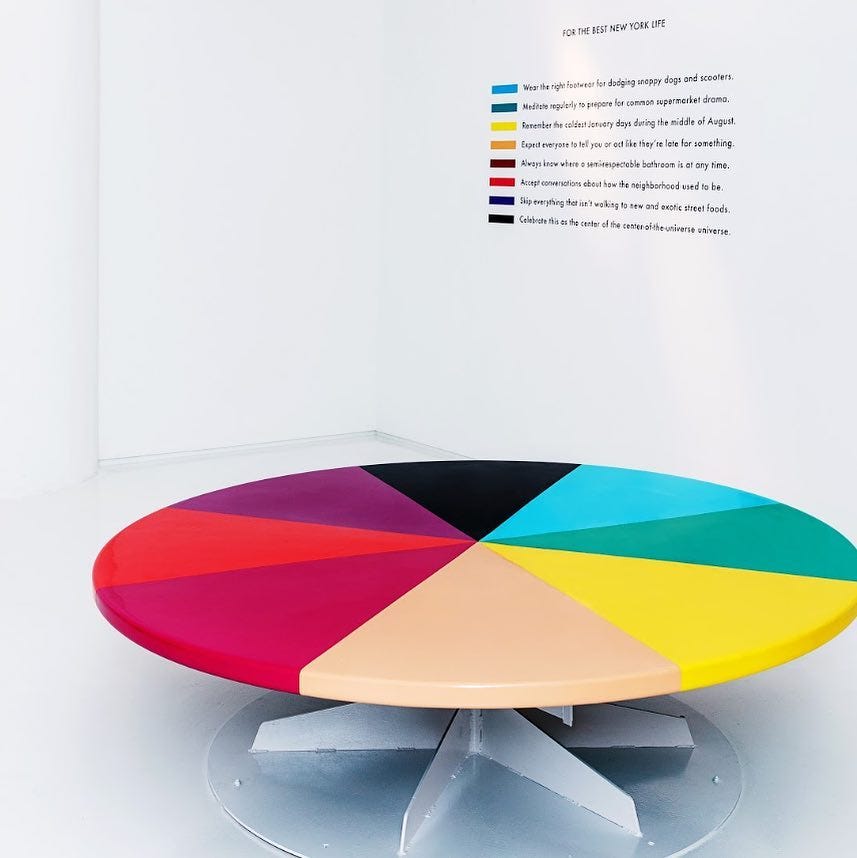
The thoughtfulness behind each room manifests best in Andrew Kuo’s spinning pie charts, where he’s turned his observations about city life into a series of infographic merry-go-rounds. We cheerily pile onto these spinning discs and pose for the cameras above, becoming dizzy in the process.
Kuo’s advice for living your best New York life? Skip everything that isn’t walking to new and exotic street foods (deep purple). Meditate regularly to prepare for common supermarket drama (green). Expect everyone to tell you or act like they’re late for something (orange).
The organizers also smartly took care in removing the need for selfie sticks through photo booth technology, as each visitor receives a scannable card with a unique QR code at the start of Color Factory. Simply scan the QR code, watch the 5-second countdown timer, stand at the appropriate place, and have your group photos sent straight to your inbox. The technology worked flawlessly and the results were sent via email at a surprisingly fast speed. For those of us with short arms and not a lot of patience, a big thumbs up.
The built-in photobooth technology also keeps groups moving through the maze-like, one-way experience at a decent clip. In fact, none of the rooms felt overly crowded and the experience was relatively well-paced, without the long lines that plague other Instagram museums (except at the end, at coat check).
And what of the branded or sponsored content? I recognized only one clearly “branded” room during the experience, a dark, empty dance floor with a sequined wall on one side and a large mirror on the other. This exhibit fell flat and my group clamored to move on.
I didn’t realize until much later that the charming ombre floating balloon room was created in partnership with Gymboree and local nonprofit 826NYC. Each of the luminous balloons in the room contained the text of a schoolchild’s hope for the world. My favorite: a lot of pizza. Plus, a chunk of the proceeds from the gift shop goes to 826NYC as well as other local nonprofit groups and the museum also brings in kids from nearby Title 1 schools twice a month.
I was also pleasantly surprised by how Color Factory integrates other local cultural institutions into the experience. The tiny, charming MMUSEUMM has its own room displaying wacky wares like corroded items found at the bottom of the ocean. Lower East Side gelato favorites Il Laboratorio de Gelato hand out samples of gelato colored a pretty sky blue using butterfly pea powder, while the French bakery Mille-Feuille provides a dazzling array of colorful macarons which fly by on a conveyer belt (one per person, please, notes a man in a cheery yellow jumpsuit). And it’s hard to resist the allure of Scandinavian candy provided by Sockerbit in this color-saturated environment. My friend offers me a bright orange Swedish fish, smiling. I can’t resist.

But what truly sets the Color Factory apart is its takeaway gift—a map of the neighborhood containing 20 other surprise art installations (including a secret balloon cart), so that visitors can continue exploring the colors of the city, in their own time, at their own pace.
On its own, the map doesn’t seem that special, but after having been primed by 90 minutes of interactive art fun, the message was clear: there’s a world of art out there to explore.
We all just need to start looking.
The Color Factory is currently sold out. Our fingers are crossed for an extension.
NoPro is a labor of love made possible by:

…and our generous Patreon backers: join them today!
In addition to the No Proscenium web site, our podcast, and our newsletters, you can find NoPro on Twitter, Facebook, YouTube, Instagram, in the Facebook community Everything Immersive, and on our Slack forum.




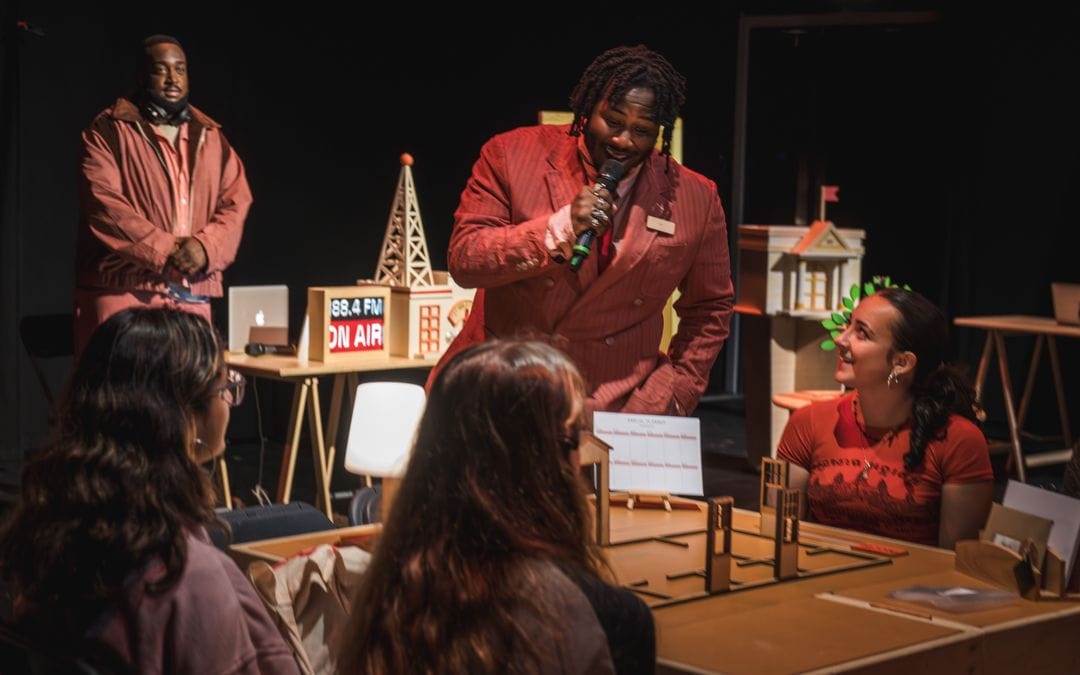















Discussion